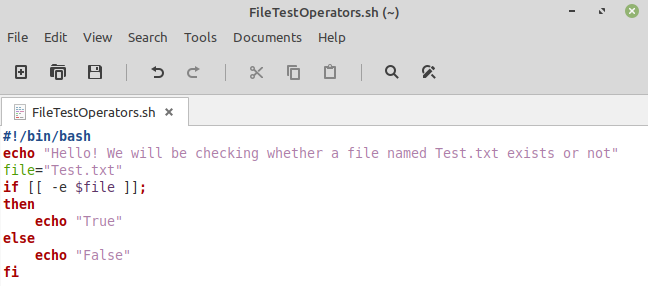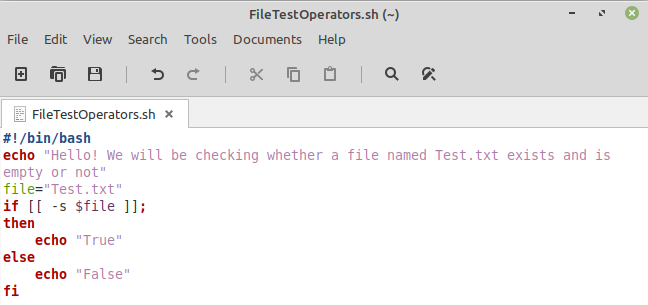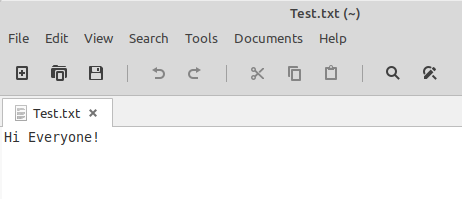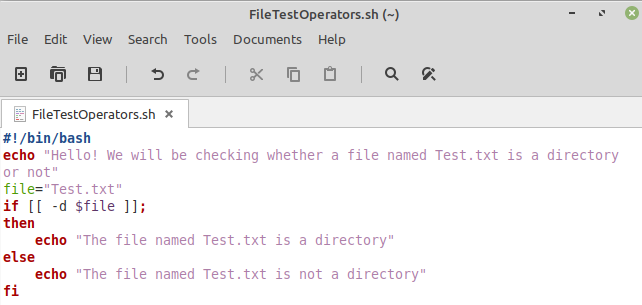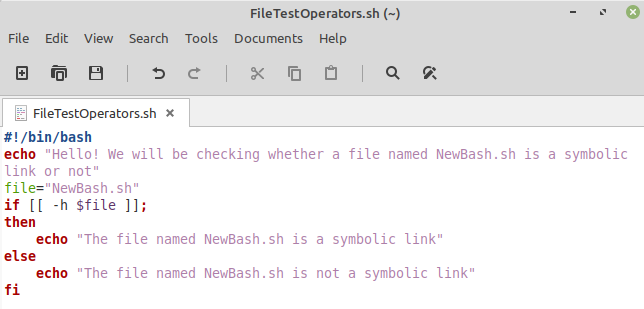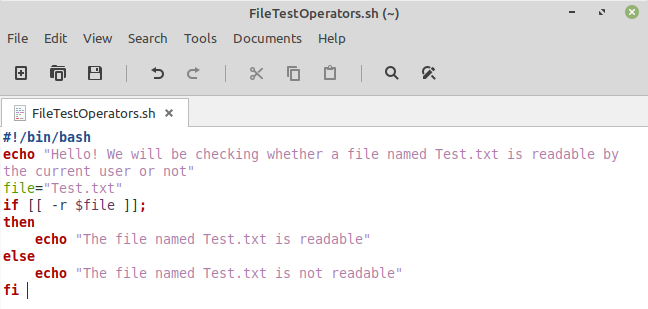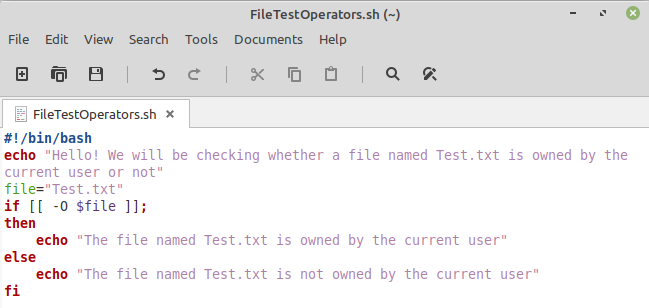While working with files in any operating system, it is mandatory for the user to test those files for certain aspects such as their ownership, access rights, content, existence, etc. These aspects can be figured out while coupling the “if” statement with various file test operators in Bash. The “if –e” and “if –s” are such operators in Bash, used for testing the existence of a file. The difference between the two is that the former only tests the existence of a file, whereas the latter also checks if there are any contents in that file or not. Today, we will try to understand the usage of these two operators, along with a few other file test operators in Bash.
Note: To demonstrate the usage of file test operators in Bash, we have used Linux Mint 20.
Examples of Using File Test Operators in Bash
There are different ways in which the file test operators “if –e” and “if –s” can be used. To explain their usage, we will share some examples with you.
Example of Using “if –e” Operator
For using the “if –e” operator in Bash, you need to follow these steps:
First, we have created an empty text file named Test.txt in our Home directory. Then we created a bash file named FileTestOperators.sh in the same directory. After creating this file, we typed the script shown in the following image in our file. In this bash script, declared a variable named “file” and assigned it our text file named Test.txt as its value. Then we have an “if –e” statement, which produces a “true” output if any specified file exists.
For testing our script, we will run it using the command stated below:
In our case, since the text file existed, that is why the output of our script will be true, as shown in the following image:
Example of Using “if –s” Operator
For using the “if –s” operator in Bash, you should perform the steps listed below:
For this example, our bash script is the same as we used above. We have just changed the “if –e” statement to “if –s”. Also, we have used the very same empty text file Test.txt.
Now, when we run this script, the output will be false because the “if –s” operator returns true if a file exists and also if it is not empty. Since in our case, although the file existed, still it was empty that is why our output turned out to be false as shown in the following image:
For making this flag to be true, we will write some dummy text in our text file, as shown below:
Then we run our bash script again, and this time the output will be true, as shown in the following image because the text file has some text in it now.
Examples of Using Other File Test Operators
Other than the “if –e” and “if –s” operators, there are other file test operators too. Below we will share with you some of the most important file test operators other than the ones that are discussed above.
Example of Using “if –d” Operator
For using the “if –d” operator in Bash, you should perform the steps listed below:
For this example, our bash script is the same as we used above. We have just changed the “if –s” statement to “if –d”. Also, we have used the very same text file Test.txt.
The “if –d” operator returns true if your file is a directory, otherwise, it will be false. Since our text file was not a directory, therefore, the output will be false, as shown in the following image:
Example of Using “if –h” Operator
For using the “if –h” operator in Bash, you need to follow these steps:
For this example, our bash script is the same as we used above. We have just changed the “if –d” statement to “if –h”. However, we have used a different file for testing this time, which was in fact, a symbolic link named NewBash.sh.
The “if –h” operator returns true if your file is a symbolic link, otherwise, it will be false. Since our test file was a symbolic link, therefore, the output will be true, as shown in the following image:
Example of Using “if –r” Operator
For using the “if –r” operator in Bash, you need to follow these steps:
For this example, our bash script is the same as we used above. We have just changed the “if –h” statement to “if –r”. Also, we have used the very same text file Test.txt.
The output of the “if –r” operator will be true if the current user can read the file, otherwise, it will be false. Since our text file was readable by us, therefore, the output will be true, as shown in the following image:
In the same manner, you can use the “if –w” and “if –x” operators to check whether a file is writable and executable by the current owner, respectively.
Example of Using “if –O” Operator
For using the “if –O” operator in Bash, you should perform the steps listed below:
For this example, our bash script is the same as we used above. We have just changed the “if –r” statement to “if –O”. Also, we have used the very same text file Test.txt.
The output of the “if –O” operator will be true if the current user owns the file, otherwise, it will be false. Since our text file was owned by us, therefore, the output will be true as shown in the following image:
Conclusion
This article briefed the reader about the usage of the different file test operators in Bash using the Linux operating system. By making use of these file test operators, it gets very convenient for the user to work with files without any potential difficulties. There are some other file test operators too, which can be used for different purposes However, the ones that are discussed in this article are most commonly used.

